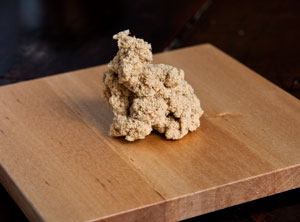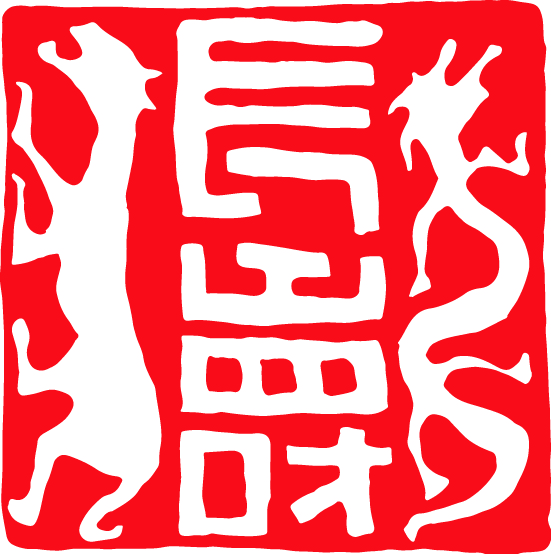Acupuncture
The Chinese word for acupuncture, “zhen jiu”, is comprised of the characters for “needles” and “moxibustion”, so I consider acupuncture to include the full range of therapies that I might use to treat the body – needles represent only one of those tools. Needles or small cones of moxa might be used to treat specific acupuncture points, or I might use cups or gua sha to draw out the stagnation and waste materials stuck in the tissue that contribute to a lack of circulation and resulting pain.

Acupuncture needle
The “zhen” portion of acupuncture involves the insertion of thin needles into points found along particular body pathways known as “channels” or “meridians”. The needles are said to access the qi that runs through these channels, and in that way promote energy circulation around the body – this description has always sounded a little abstract to me and I prefer to describe the effect acupuncture as something that either relaxes muscles and other tissues thereby alleviating pain and tension while increasing circulation (as in relaxing the psoas muscle, the iliocecal valve or the diaphragm) or activates specific organs to function better.
The idea that acupuncture treats pain by unblocking the flow of qi in the channels is reflected by the famous Chinese medical saying, “tong ze bu tong, tong ze bu tong”, which means “where there is pain, there is no free flow, and where there is free flow, there is no pain”. I think we can say that the most basic thing acupuncture does is promote the free flow of blood, qi and fluids in the tissues and organs to both decrease pain and increase the responsiveness of the organs.
There are fourteen acupuncture channels that traverse the body as well as eight “extraordinary vessels” that intersect with and borrow points from the main channels. There are well over 300 acupuncture points that are mapped onto the body, a number that increases dramatically, even infinitely, when one considers that any point that is painful upon palpation, known as an “a shi”, or “ah yes” point, can be needled for therapeutic effect. There are also many off channel and in between channel points that are a part of the Tung system of acupuncture that I use. This is a system of acupuncture that was handed down through the Tung family of Shandong province in China until it began to be shared it with students in Taiwan after the last in the Tung line fled China after the revolution – we are lucky he chose to share this amazing system of acupuncture outside the family.
I also draw from Japanese traditions like Kiiko Matsumoto style and Shudo Denmei’s brand of Meridian Therapy, and I particularly like the use of palpation and generous amounts of moxa that tend to characterize Japanese styles of acupuncture.
Moxibustion
Some people are happy to hear that an acupuncturist’s tool set is not limited to needles. The “jiu” portion of acupuncture is known in English as moxibustion, the process by which tiny bits of moxa floss (made of mugwort leaves) are burned on the surface of the skin to stimulate acupuncture points. Just as there are many styles of acupuncture and needling, there are also a variety of ways of administering moxibustion. These can range from rice grain sized cones burned directly on the skin, to large Hershey’s kiss sized cones burned on a substrate such as ginger or garlic, to moxa boxes on the abdomen, to indirectly applied pole moxa.
When moxa is burned directly on the skin, a protective ointment is used, and the size of the cones is small enough to insure that while the patient experiences the sensation of the moxa, the skin remains unharmed. Moxa might also be applied at specific times during the change of seasons to boost immunity, or in the off-season to combat allergies that would otherwise occur when the pollen count is up or there are other allergens in the air. I use moxibustion frequently.
Cupping & Gua Sha
In addition to acupuncture and moxibustion, there are two other slightly related therapies that a practitioner might use called cupping and gua sha. Cupping is the application of suction to the body for the purpose of drawing out stagnation or other accumulated pathogens while gua sha literally translates as “scraping out the sha” and can be performed with anything from a specialized tool made of water buffalo horn to a porcelain Chinese soup spoon. The distinctive red dotting and discoloration known as “sha” that occurs with gua sha disappears within a few days and is often associated with instantaneous relief of pain. Temporary marking can also result with cupping, and in the same way indicates good therapeutic effect. The marks associated with these therapies, while sometimes dramatic, are temporary and indicate the exit from the body of qi and blood stagnation that has built up over time thereby preventing the smooth movement of qi through the channels. Interestingly, once the marking is obtained and the result achieved, marking generally either doesn’t appear again in the same place or appears to a much lesser degree when the therapy is repeated indicating less stagnation in the area.
I’ve included a link to my Yong Kang Clinic colleague Michael Max’s FAQs for cupping here. He does a nice job of describing the details.
These techniques represent some of the major tools acupuncture has to offer within the scope of Chinese medicine. They might be used alone or in conjunction and are always chosen based on the presenting condition and most appropriate strategy for resolving that condition.


